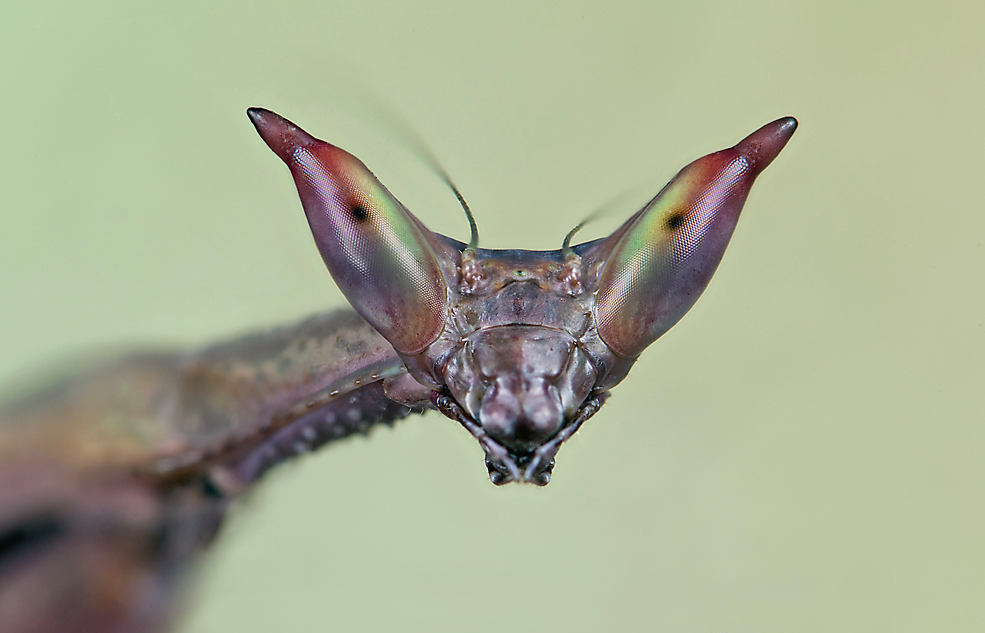
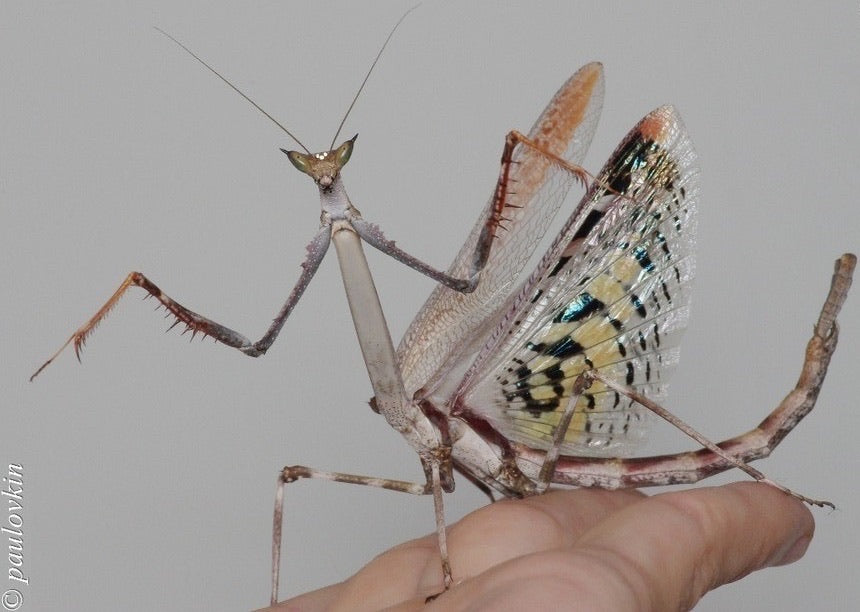
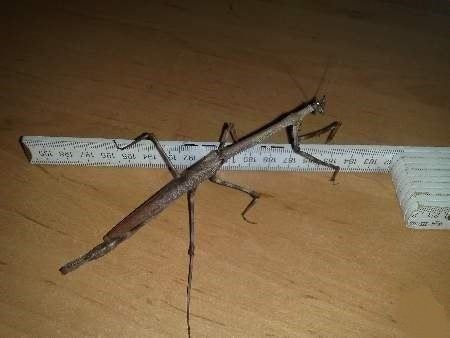
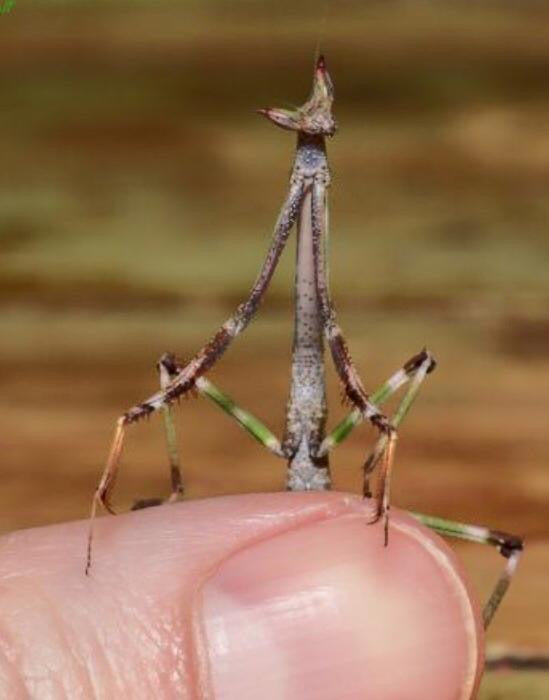
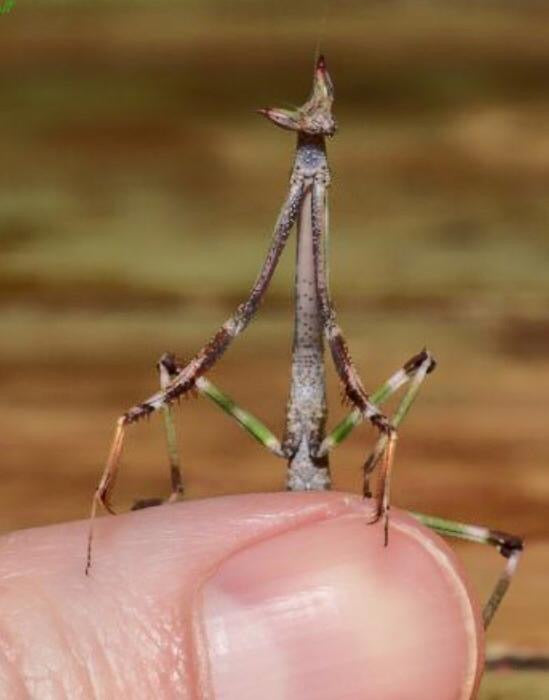
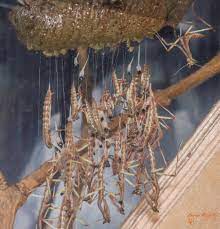
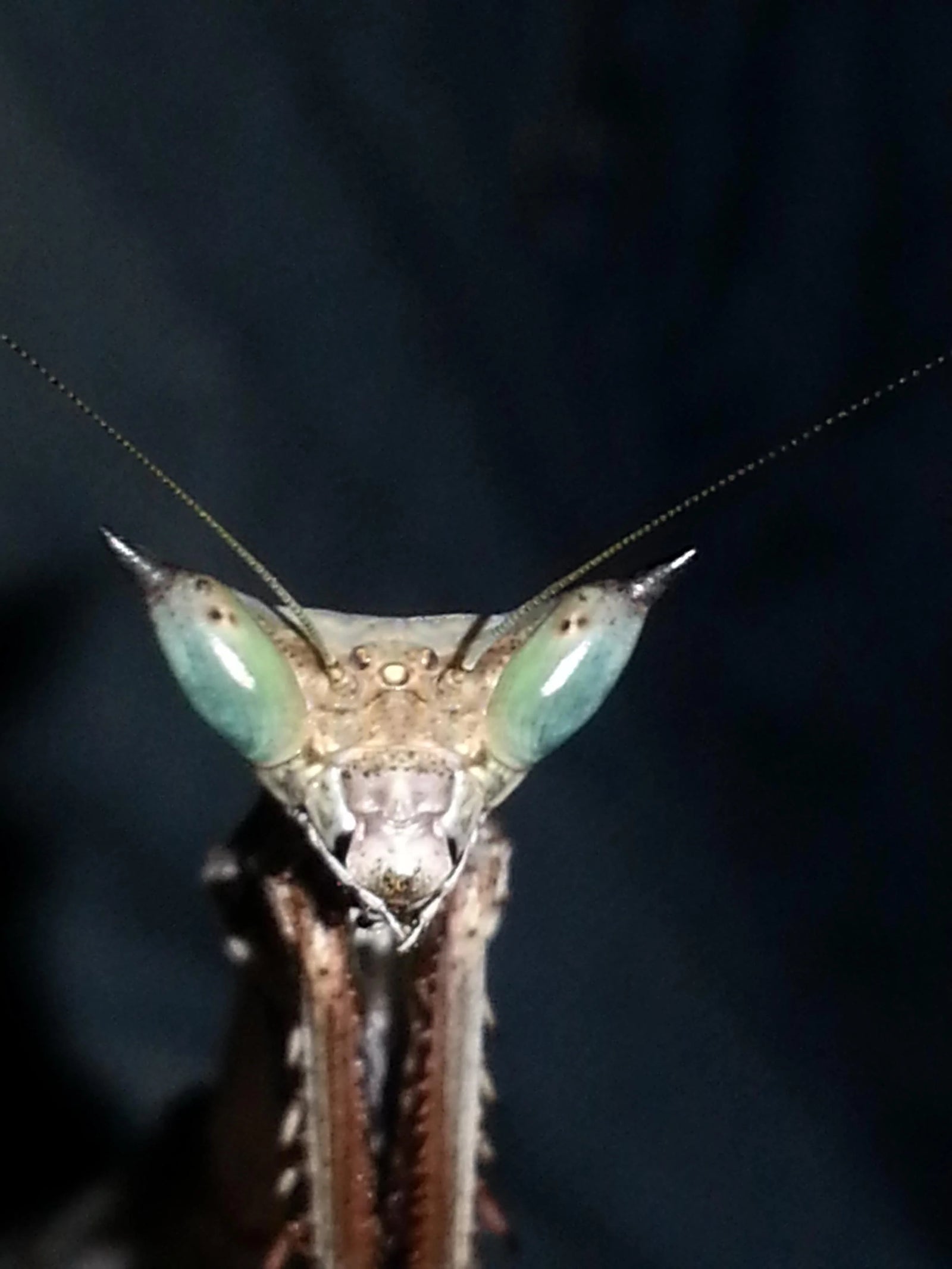
Sold out
Heterochaeta orientalis Giant African Stick mantis / cat-eye mantis / 'Chaeta
$35.00 - $175.00
“Slow Growing, long living up to 24 months! Wonderful species, communal and so sweet “ Craig recommends!
This seems to be a relatively new species in culture. As L1 nymphs they are very long, measuring just over an inch long!
Common name: Giant African Stick mantis/cat-eye mantis / 'Chaeta
Physical description: 'Chaeta is among the largest species of praying mantis kept in captivity, some documented over half a foot long. 'Chaeta is a stick mimic, with it's long and slender appearance, strikingly resembling a part of a branch. 'Chaeta has two conical protrusions on top of both eyes that are distinguished even from the hatchling stage. Chaeta generally has a medium to dark brown coloration and sometimes develops tinges of green, usually on the femur and tibia in its nymph stages. It is also not unusual to see red horns, with blue and green eye color.
Native range: 'Chaeta is an African mantis, stemming from central Africa and was first discovered in Tanzania
Difficulty level: Advanced
Development
Rate of growth and factors involved: 'chaeta is a slow-growing mantis. Its first molt takes about two weeks. Its last molt can take two months. 'Chaeta will grow quicker like most mantids, with warmer temps and frequent feeding.
Longevity: 'chaeta's life span from hatchling to adulthood is at least a year and can reach over a year and a half under optimal conditions.
Molting observations: 'chaeta will usually look for a camoflaged spot it will perch upside down from and begin to shed skin. Most chaetas molt in unison, within the same 2 day window. 'Chaeta will refuse food before molting.
Behavior/temperament
Degree of activity: 'chaeta is not a very active mantis, and spends most of its day in one area, even as a nymph.
Degree of aggression or timidity: 'chaeta is a very shy and docile mantis. 'Chaeta normally do not hunt prey but are more of ambush predators relying on its camouflage to trick its prey into getting comfortably close within striking distance.
Propensity to cannibalize: 'chaeta has a highly unlikely cannibalization rate if kept with generous space and food. In fact, chaeta is definitely one of the most tolerant mantis towards each other in culture.
Dynamics of threat display: 'chaeta has a high tendency for eye to eye interaction and threat display. Usually any quick, previously undetected movement will get chaeta into a threat pose. 'Chaeta will open its coxa out horizontally and extend its raptors with femur and tarsus together, revealing it's warning colors, navy with white dots and a white stripe horizontally connecting them both, on the inside of its coxa. 'Chaeta only opens up its wing set in very confrontational situations as adult.
Captive Environment
Temperature range and humidity levels: 'chaeta has a high tolerance level to heat and humidity and its living conditions can vary. I've found the best success with heterochaeta is room temps about 60-80ºf with at least 30% humidity.
Type and size of enclosure(s) used: chaeta needs to be put in a container 3x its length in diameter and 6x its size in height. Chaeta demands a lot of molting and living space. This maybe the toughest thing about keeping chaeta. I've had success with delis in groups of up to 7 to L4, then they must go inside of a larger net cage container.
The substrate or lack thereof: Chaeta does not need a substrate, but there should be at least 30% humidity. So a good spray every few days isn't a bad idea, but all your chaetas won't die or mismolt if you forget.
Cage furnishings, (e.g. molting surfaces, perches, décor, plants, etc.):
Chaeta' needs an environment that aids to its crypsis. Birch branches are the best recommendation. Due to chaeta needing a larger environment, it's also a good idea to hang a low wattage cfl to attract their food source. When the prey flies to the light source, it arouses chaetas predatorial instincts. Sometimes crowds of chaeta surround the light during feedings.
Communal housing if applicable: chaeta is the most communal mantis ive kept to date and I'm sure is among the most communal in culture. Cannibalization is always a greater possibility without an adequate food source, proper camouflage, and too frequent interaction.
Feeding
Feeding response: chaeta is not an active hunter like most mantids and prefers to wait until the food is within striking parameters before lunging out. Chaeta will slowly make its way towards a group of prey items.
Type and size of prey used and/or refused for various instars: chaeta, despite its skinny stick-like build, can overcome larger adversaries than you'd expect. Chaeta at 1st instar are able to eat mels and hydei. At chaetas second instar it can jump to houseflies, and at the fourth instar blue bottles can be used comfortably throughout adulthood.
Quantity and frequency of feedings: thankfully due to chaetas longer slimness, and ability to overcome surprisingly large prey, the frequency of its feeding is also determined by its size too. L1 to 3 should be fed twice a week, hydeis x6-12 per chaeta or house fly each. Once they graduate to blue bottles they should be fed once a week and be housed in a larger cage to hold a group of 1bb for each at l4 and double it every instar on. Food should continue to be added if its been all devoured. Food intake will almost double for mated females. Adult chaeta can last several weeks with no food and survive, though this is definitely not recommended at all.
Breeding
Sexing/sexual dimorphism (explanation of physical differences and/or adult sizes of the sexes):chaeta has virtually no difference between male and female by the naked eye until L5. The females are slightly larger and bulkier. Males have longer, fuller antennae. Females have an arch to their cerci that curve downwards right before their two flaps at the end of its abdomen. Males also have a slightly longer wing set and are flight capable.
Time needed from last molt to copulation:
The time frame between adulthood and the first witnessed mating is between 4 and 6 weeks. I'm sure this time frame is also dependent on environmental factors.
Tips: give us your methodology.:the best way to get chaeta to mate is to keep them communally from the start and to give them extra food and privacy at times.
Tips for inducing copulation and fecundity: higher temps and humidity aren't as much a determining factor in mating as much as a natural feeling environment.
Tips for inducing females to lay oothecae
Oothecae: females generally lay very frequently after mating, about once every two weeks, but can be up to a month between. A slightly more frequent misting and food availability may be necessary for larger healthier ooths.
Physical description and average ooth size. Picture desired; include with other pictures at bottom of Care Sheet.: Chaeta oothecae are about 50 mm in length and 35 mm in diameter. They are large, dark gray to light brown, foamy oval oothecae with a long hanging thread at the end. Chaeta oothecae are laid on the underside of a branch most of the time.
Diapause if necessary: chaeta ooths do not require a diapause.
Incubation time and temperature: chaeta oothecae take about 45-60 days from lay date to hatch date. Hatching and living temps shouldn't differ.
Observed number/s and range of hatching nymphs: healthy chaeta ooths should boast in the 50 to 60 range. Even the smallest ooths at the end of a mantids life cycle can hatch 10 mantids.
*OOTHS are never guaranteed to hatch! they can take up to 10 weeks to hatch. We do assure you that they are fertile and captive bred







